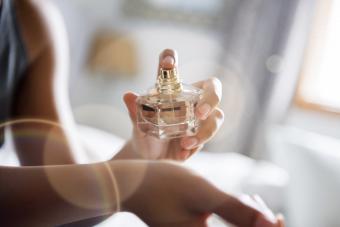
The Evidence of Makeup
Scientists agree that it is impossible to tell who invented makeup but we can easily date the oldest available evidences of makeup. Archeologists recently found evidence of makeup in an Egyptian tomb in Karnak. Buried with the dead were clay containers that contained color palettes of black eye paint, green eye shadow and pigments used as lip stains.
The eye makeup found was successfully dated to over 3,000 years old. Other finds from a Dead Sea spa attributed to Cleopatra have revealed skin care products made of potassium chloride, magnesium chloride and bromides.
There is supporting evidence in written history attributing the Egyptian dynasty with the earliest use of makeup. First century historian, Pliny the Elder describes in great detail and with greater fascination the Egyptian method for mixing and wearing of eye ostentatious makeup.
Later civilizations like the Grecian and Roman also wore makeup although these civilizations were more moderate in their applications.
Why Makeup?
Makeup lovers and historians give many reasons as to why people began wearing makeup. Our best hypothesis show that there were a variety of possibilities ranging from spiritual beliefs to improving physical appearance. This list represents the most popular beliefs about ancient Egyptian cosmetics.
- Ancient fashion trends
- Makeup separated the classes
- Protection for eyes from hot sunny conditions
- To protect the wearer from the evil eye
- Shielded the facial skin from sun burns
- Believed it cured eye diseases
What Did It Look Like?
The makeup styles of Egypt are well documented on stone reliefs found in tombs, monuments and surviving public buildings. Over the centuries men and women have enjoyed this style of heavy handed makeup, especially during Halloween and at costume balls. To get an idea of what this makeup looks like you can visit online pictorials and encyclopedias.
St. Louis University
Visit St. Louis University's Kings and Queens website for startlingly detailed images of Hatshepsut, ancient Queen of Egypt who's reign lasted from 1472 BC to 1457 BC. According to the pictures, Hatshepsut wore black eyebrows and kohl lined eyes. Her skin may also have been darkened with mineral powders.
National Geographic
The online magazine of National Geographic has an interesting article and pictures on the subject of Ancient Egyptian Makeup. French researchers focused on the spiritual meaning of makeup traditions of this early civilization.
Other Civilizations
Over time civilizations shared makeup trends but similar to today's world, there were cultural differences. The major civilizations of the time like the Grecian and Roman had their own cosmetic applications that they favored.
Greece
Grecian society was enthralled with staying young. This love for natural beauty and perpetual youthfulness fueled much of their makeup customs. Women who could afford the expensive lead makeup powdered their face with it. Others use olive oil treatments to give their skin a dewy look. Grecian women largely didn't wear rouge but they did wear makeup to darken their eyebrows.
Rome
For centuries Rome was considered the center of style and fashion. Roman women liked to look pale and used a lead-based white paint to achieve this light look. Red dye was applied to the lips and cheeks. A sooty eye makeup darkened the eyelids, similar to the eyeshadow of today. The Romans were well known for their use of fragrant oils and perfumes.
Makeup Inventions
Other cultures have contributed to the makeup culture like Ancient Sumer, Babylon and Persia. Today's modern styles are less flamboyant than ancient makeup treatments. However, personal style is a large part of picking and wearing makeup fashion.







